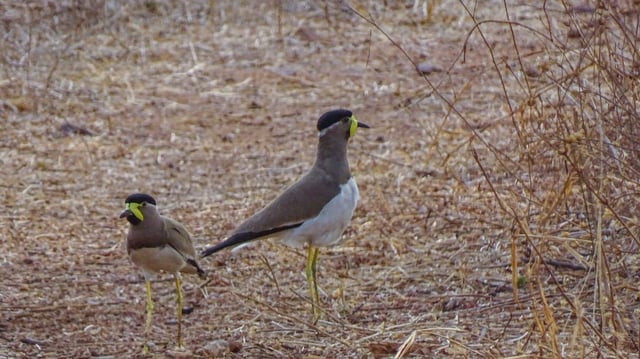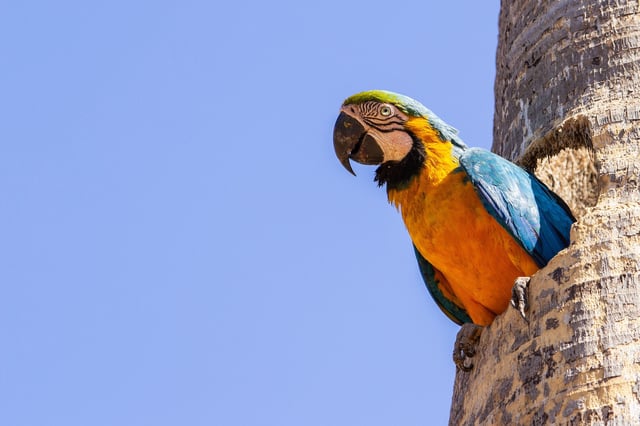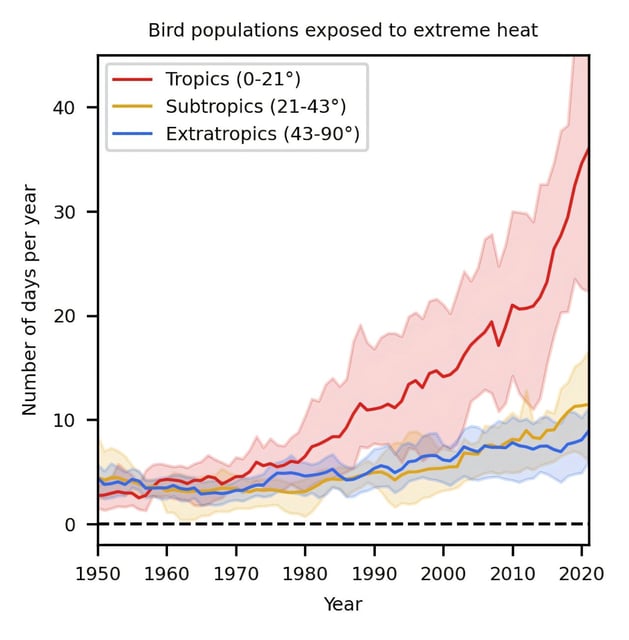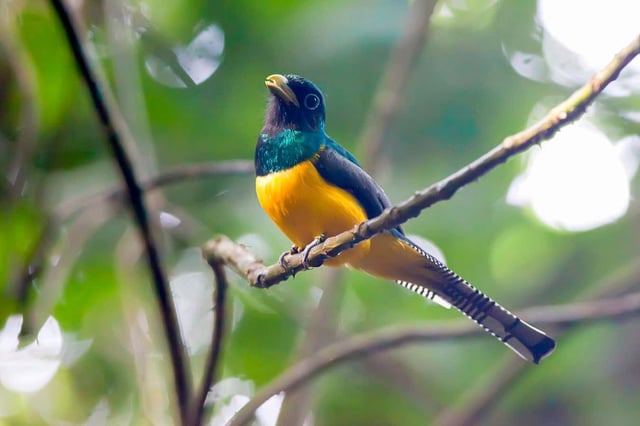Overview
- The study represents the first application of formal climate-attribution methods to quantify the effect of human-driven warming on wildlife population declines.
- Researchers combined multi-decadal bird abundance records with land-use data and ERA5 reanalysis under a no-warming counterfactual to isolate the role of intensified heat extremes.
- Tropical land-bird populations now face about 30 days of extreme heat each year, a tenfold increase over mid-20th century levels, and have declined by 25–38% compared with a world without warming.
- Intensified heat extremes drive direct mortality through hyperthermia and dehydration and undermine breeding success by impairing body condition.
- Authors warn that conservation strategies must extend beyond habitat protection to include targeted monitoring, heat refugia and early-warning systems in light of geographic data gaps that likely underestimate true impacts.



